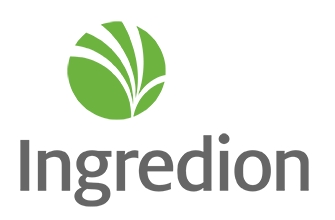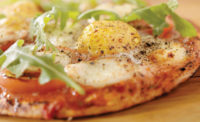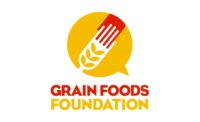The gluten-free market across the historically wheat-centric snack and bakery industry has hit a point in its evolution where it has begun to mature and grow more refined. Snack producers and bakers now bring more intrinsic nutrition to products through more-astute ingredient selection and formulation tactics. A greater variety of quality products continue to hit supermarket shelves and restaurant menus. Also, like everywhere else across the food industry, a growing concern to develop cleaner, more-simplified labels is at play in gluten-free.
And despite persistent discussions about the gluten-free market hitting is plateau, the more-specialized “free-from” market—which eschews all major, and some minor, allergens—continues its ascent, and will bring a renewed sense of gluten-free awareness along for the ride. Also, in foodservice, gluten-free is still on a rapid trajectory, hitting historic highs as more operators bring a wider assortment of truly gluten-free foods to restaurant menus.

A new era of innovation
Gluten-free has hit its apparent peak across the snack and bakery industry, with sales dropping to single-digit levels—from 11 percent growth in 2015 to an estimated 6 percent in 2016 per Packaged Facts.
But now a new level of innovation is starting to take hold. Snack producers and bakers now seek to develop products that have a strong sense of overall awareness compared to the early days of the movement when it sufficed to simply fill the gap left by the removal of gluten-containing ingredients, primarily wheat flour, which often serves a variety of functional roles in foods—particularly grain-centric foods like snacks and baked goods.
“More innovation has hit the market,” says Jessie Hunter, director of domestic marketing, USA Dry Pea & Lentil Council, Moscow, ID. “Gluten-free consumers used to be limited to a few products, but because of the influx of new products on the market, are now able to be choosier with their selections. One of the biggest trends we’ve seen is the introduction of value-added gluten-free snack products. Whereas early on the key value was the fact that the snacks were simply gluten-free, they now boast a variety of other nutritional benefits from protein, fiber and nutrient additions, to being non-GMO and clean-label.”
The desire to be both clean-label and gluten-free is driving innovation. “Clean labels are a big trend in the gluten-free snack and baked goods world,” says Joel Warady, chief sales & marketing officer, Enjoy Life Foods, Chicago. “It used to be that gluten-free options were packed with unfamiliar or artificial, or just too many ingredients, but that’s changed as manufacturers are making it a priority to bring products to market that fit the bill for what clean eaters are looking for.”
Gluten-free consumers are very aware of labels and ingredients, notes Ricardo Rodriguez, marketing manager, confectionery and bakery, Ingredion Inc., Bridgewater, NJ. “In a proprietary study by Ingredion on non-celiac gluten-free consumers, 97 percent of them look at ingredients prior to purchasing an item. Certainly this can be expected from celiac consumers, but clearly non-celiac consumers are more aware than ever about labels and ingredients. In the same study, the category that consumers consumed the highest level of gluten-free products was crackers (72 percent). Traditionally bread and pasta have been the highest-ranking categories, so the fact that consumers are more interested in crackers presents new opportunities for the category to innovate and grow.” He also points toward tortillas, cookies and extruded snacks as potential areas of growth, “particularly as ingredient functionality advances.”
The use of plant-based ingredients and ancient grains, which are both typically higher in fiber and protein than other ingredients used in gluten-free products continues to grow, notes Rodriguez. “Consumers are beginning to understand that a tradeoff of gluten-free products is that they may not be as nutritionally fortified as their wheat counterparts, therefore the use of these type of ingredients is desired to help offset that difference.”
As the gluten-free cracker category continues to grow, consumers will look for healthier, better-quality versions, says Rodriguez. At SNAXPO this year, Ingredion launched the PRECISA CRISP series of snack texturizers. “The texturizers allow you to create baked snacks with enhanced textures, optimal expansion and reduced breakage to offer a healthier snack option and to deliver a textural satisfying eating experience.” He notes that the PRECISA CRISP series features new starches with differentiated functionality, providing manufacturers with a number of solutions to address varying formulation and process needs. “In processing, they create dough that is more cohesive and easy to sheet, while managing hydration and stickiness. The new series of texturizers provide a range of expansion and textures in snacks from light and crispy to hard and crunchy allowing developers to create unique and differentiated snacks.”
Rodriguez also notes that Ingredion has done work in crackers using pulse-based ingredients like peas, lentils, fava beans and chickpeas to replace wheat. “Pulses add the nutritional benefits that address consumers need for protein- and fiber-rich, clean-label products. They can boost the nutritional profile of formulations, replace allergens and also help support popular label claims such as non-GMO, vegan and gluten free.”
Hunter says that as a result of their multiple benefits, pulses are among many of the top-trending categories among gluten-free foods, as noted in recent Packaged Facts research (“New gluten free foods powered by clean labels, plant protein, and ancient grains”).
Snack and bakery application insights
Nut ingredients are also strong options for gluten-free. “Traditionally, almonds have been an essential ingredient in bakery innovation, inspiring favorites including almond croissants, French macarons and strudel,” says Molly Spence, director of North America, Almond Board of California, Modesto. “Almonds are also an ideal ingredient in gluten-free bakery products, as they bring the crunch, texture and visual appeal that manufacturers and consumers are looking for. For example, Zest, a Boulder, CO–based gluten-free product manufacturer, uses almonds in all of their Paleo Perfect cookies and cakes, naming the percentage of almonds used in each product right on the packaging. Cappello’s, based in Denver, use almonds as the base of their gluten-free fettuccine, lasagna sheets and cookie doughs.”
Spence notes almond flour is available in such a fine grind that it can be utilized in even more gluten-free formulations, including as an alternative to wheat flour in brownies, cakes, cookies and crusts.
“In the snack category, whole and chopped almonds are being mixed with gluten-free grains and seeds in bars that pack a nutritional punch. We are seeing almond butter used as a clean-label-friendly binder, and as a filling or coating in bars and bites, with new snack formats, like granola cups.”
As gluten-free has grown more mainstream, shoppers and restaurant patrons have started holding gluten-free snacks and baked goods to the same standards of taste and health as their conventional counterparts, says Charlie Pace, president and CEO, Smart Flour Foods, Austin, TX. “The biggest trend we see in gluten-free snacking is that in addition to being safe for consumers with a gluten sensitivity, the products have to taste good and be nutritious. We think those values are why we’ve received such a great response to our products. By making our crusts with naturally gluten-free ancient grains, our pizzas provide a delicious taste whether or not a consumer has to follow a gluten-free diet.”
Smart Flour Foods recently released a line of gluten-free frozen pizza rolls to the market, called Snack Bites. Pace calls the products a “better-for-you, wholesome, innovative and cleaner take on a popular snacking favorite.” The dough is made with Smart Flour’s proprietary blend of the ancient grains sorghum, amaranth and teff, and the product is certified gluten-free, free of artificial colors and flavors, made with several organic ingredients, and free of many allergens, including wheat, nuts, tree nuts, soy and eggs.
The line is available in Three Cheese, Uncured Pepperoni and Pepperoni & Sausage Combo. “Each of the varieties are filled with a real, hormone-free mozzarella, Parmesan, and Romano cheese blend, along with uncured, nitrate- and nitrite-free pepperoni in the meat versions,” says Pace.
Smart Flour Foods offers pizza products for both retail and foodservice. “On the pizza side of the Smart Flour Foods business, we recently received Non-GMO Project Verification for our ancient-grain based pizza crusts.
Toufayan Bakeries, Ridgefield NJ, has been busy innovating new gluten-free products notes Karen Toufayan, vice president, marketing and sales. “Toufayan released two new flavors of Gluten Free Pita Chips, Smoked Chipotle and Caramelized Onion. We are still currently the only Gluten-Free Pita Chip in the market. We also produce a gluten-free cookie line called Goodie Girl Cookies, which currently has seven flavors in the market.”
Gluten-free specialist Canyon Bakehouse, Loveland, CO, recently released new Heritage Style pan breads. “These are large loaves with deli-sized slices of bread,” says Kevin Brouillette, vice president of sales and marketing. “Historically, gluten-free breads have smaller slices, because you can’t just add more dough to a larger pan and yield a large gluten-free loaf. Gluten-free breads won’t rise the same way that wheat breads do.” The Heritage Style loaves are available in Honey White and Whole Grain.
“Our team recently cracked the code with the launch of Heritage Style loaves,” continues Brouillette. “We have been working on this for a while, finding both the right recipe, as well as attempting various baking approaches. We are really pleased with the flavor and texture, and the bread has a soft, chewy center with a golden crust. And, our fans are giving us wonderful feedback on how they are enjoying Heritage loaves, too. Gluten-free shoppers have become used to bread that’s almost half the size of a normal slice of bread, and there’s something special about grabbing a full-size slice of bread and feeling that normalcy again.”
Brouillette notes that Canyon Bakehouse uses a blend of whole grains and other ingredients to make the Heritage Style loaves: tapioca flour and brown rice flour, as well as whole-grain sorghum, millet, teff, quinoa, amaranth and buckwheat. (For our feature on Canyon Bakehouse and its gluten-free bakery in Loveland, CO, see “Canyon Bakehouse redefines gluten-free.”)

Sorghum in the spotlight
Sorghum has emerged as a go-to ingredient for new snack and bakery innovations. “We chose whole-grain sorghum as the lead ingredient in our pretzels because it was the best alternative to the bleached and refined flours found in almost all classic pretzels that currently exist in the marketplace,” says Kristy Lewis, co-founder and CEO, Quinn Snacks, Boulder, CO. “In addition, since sorghum flour is naturally gluten-free, we were able to steer away from the soy and corn ingredients that are found in all other gluten-free options.
“Sorghum tastes better, has a better crunch, is better for you and is better for the land,” continues Lewis. “We work with Earl Roemer, a fourth-generation farmer, because we wanted to partner with a supplier who cares as much about the quality of the sorghum as we do. When we connected with Earl, we learned that not only was sorghum whole-grain and naturally gluten-free, it was an ancient grain, meaning it evolved wildly without much intervening from humans. Over time, sorghum plants developed extensive root structures to access water held deep within the land and survive in times of little rainfall. This characteristic makes sorghum one of most drought-tolerant and water-efficient crops.” (Quinn Snacks is the 2017 Snack Food & Wholesale Bakery “Snack Producer of the Year”; to review our profile of this innovative, game-changing snack company, see “Snacks reimagined—Quinn Snacks, 2017 Snack Producer of the Year.”)
Doug Bice, market development director, Sorghum Checkoff, Lubbock, TX, also points to sorghum as a great option for gluten-free extruded snacks like puffs and pillows. “Sorghum maintains its form integrity such that flavorants and/or coloring can be added with little to no impact to taste or shelf life preservation. Crisps from baking operations are becoming a target market for similar reasons, though unique sorghum varietals provide better inherent taste qualities than others.”
Bice also notes that “waxy sorghum” varietals have been a big move in the baking arena. “These varietals have little to no amylose starch, almost exclusively amylopectin and, as such, enhance the flour cell structure dramatically as it relates to hydration, taste and integrity.”
Sorghum was also recently tapped as a key ingredient in the new ancient grains gluten-free pizza crust from Papa John’s. The crust is currently being tested in Los Angeles, Phoenix, St. Louis, Houston and Nashville.
The ascent of ‘free from’
While gluten-free sales has started to show some signs of leveling-out, “free-from” foods are still very much in growth mode.
“Foods free-from the top eight allergens—identified as milk, eggs, fish, crustacean shellfish, tree nuts, peanuts, wheat and soy—are continuing to grow as food allergies become more prevalent, and as vegans and vegetarians look for products compatible with their lifestyles,” Warady. “Enjoy Life Foods has been shaping the free-from category since it was founded in 2001 and has significantly driven the industry’s growth, which will reach $12 billion by 2020, according to Datamonitor. The gluten-free diet fad is actually fading, but the amount of people with gluten intolerances and celiac disease continues to rise, so it’s still a necessity to innovate gluten-free foods across every aisle.” (Enjoy Life Foods is the Snack Food & Wholesale Bakery 2017 “Bakery of the Year”; for more information, see “Enjoy Life Foods named 2017 ‘Bakery of the Year.’”)
“Plant-based protein is another driver in the gluten-free category,” says Warady. “Shoppers want plant-based protein, and that’s something we’ve prioritized in both our gluten-free baking mixes and our new ProBurst Bites, which have six to seven grams of plant-based protein in each bite.” ProBurst Bites are available in four flavors: Cinnamon Spice, Sunseed Butter, Cranberry Orange and Mango Habanero.
“We also released our globally inspired new Plentils,” says Warady. The lentil-based chips come in Thai Chili Lime and Moroccan Spice.
Other new free-from product launches from Enjoy Life Foods include Soft-Baked Mini Cookies and Crunchy Mini Cookies.
“The primary ingredients we use to replace traditional wheat flour are a buckwheat flour and a flour mix, which contains a combination of millet, white rice, teff and buckwheat,” says Warady. “Our R&D team has conducted rigorous testing to find the best and highest-quality flour alternatives on the market. We opened the largest dedicated allergy-friendly bakery in the U.S. last year in Jeffersonville, IN. The 200,000-square-foot facility is certified gluten-free and dedicated nut-free, and has enabled us to continue to easily, effectively and safely innovate our new products.” (Watch for our “Bakery of the Year” feature on Enjoy Life Foods and its Jeffersonville, IN bakery in the August issue of Snack Food & Wholesale Bakery.)

Certification insights
“When food manufacturers first read the standards required for gluten-free certification, it can seem overwhelming,” says Cynthia Kupper, CEO, Gluten Intolerance Group, Auburn, WA. “However, a majority of those standards are easily relatable to typical allergen-control programs and good manufacturing processes (GMPs) that are familiar to these manufacturers.”
Kupper notes that working with a third-party certification program reduces the risk of improperly designating a product as gluten-free and gives the manufacturer the credibility, recognition and support that they have provided a gluten-free product meeting or exceeding the FDA standards. Audits conducted by certification inspectors also verify that the company is guided by and meeting high standards in producing their product.
“One important distinction to look for in choosing a third-party certification program is whether that program follows standards set by the International Organization for Standardization (ISO) and, if so, the nature of the ISO standard to which it conforms,” says Kupper. “A certification organization conforming to ISO 17065 will specify the ppm standard to which products must conform to be certified. By contrast, certification of a management system alone pursuant to ISO 17021 only certifies that the management system is adequate to produce safe, gluten-free products; it does not certify the ppm levels to which products adhere, which may actually vary between companies with a certified management system.”
Foodservice operators are also finding benefits in certification. “As with food manufacturers, it may seem like a hurdle for foodservice operators to institute the appropriate standard operating procedures to avoid cross-contamination, as well as training for employees to ensure gluten-free offerings are safe,” says Kupper. “But doing so is not as difficult as it may seem.”
Foodservice operators shouldn’t let the concern of cross-contamination stop them from offering gluten-free menu items because, in actuality, the steps to prevent cross-contamination can be taken with minimal cost,” notes Kupper.
“A kitchen or service setup often contains unnecessary risks that are simple to change, such as placing pasta at the end of a salad bar to avoid the potential for cross-contaminating other food items, storing gluten-exposed pans above those used for gluten-free preparations, and using sanitizers to clean surfaces instead of soap and water, which can spread gluten proteins,” says Kupper. “More often than not, new large equipment is not needed.” She suggests that working with a third-party to certify foodservice operation will help with these steps and lend credibility and encourage trust from gluten-free diners.
Gluten-free foodservice
Foodservice is seeing new levels of growth of gluten-free menu items. “Overall, the term ‘gluten-free’ continues to grow on menus,” says Mike Kostyo, senior publications manager, Datassential, Chicago. “It now appears on 24 percent of menus, a 447 percent jump from just four years prior. It’s the fastest-growing health term in side dishes on menus and the third-fastest growing health term in appetizers, entrées and desserts.”
Kostyo notes that currently 13 percent of the U.S. population says they follow a gluten-free diet, and another 28 percent are interested in one. “Over half of Americans say the term ‘gluten-free’ makes them more likely to buy a product,” he says.
But that comes with a caveat. “It’s the health term that consumers are least willing to pay more for,” Kostyo reports. “Only 14 percent of the population say they would pay more for gluten-free items. So operators are tasked with finding ways to offer gluten-free options at the same price point as traditional products, or with additional health-driven attributes that consumers will pay more for, like ‘local or ‘organic.’”
Pizza is a hot spot for gluten-free today. “Gluten-free pizzas are one of the hottest trends in the pizza category,” says Kostyo. “The term ‘gluten-free’ is up 400 percent in pizza over the past four years. Gluten-free is also the fast-growing sandwich term over the past four years.”
Some of the menu innovations Kostyo reports include cauliflower-based pizza crusts, sweet potato “toast” and desserts made with aquafaba, the liquid legumes are cooked/canned in, used as a vegan replacement for egg whites.
In terms of dayparts, Datassential reports that nearly half of operators (49 percent) say they currently offer gluten-free breakfast options. “It’s also the fastest-growing term in breakfast baked goods over the past four years,” says Kostyo.
For more information on the gluten-free snack and bakery market, visit the Gluten-Free Trends page.















